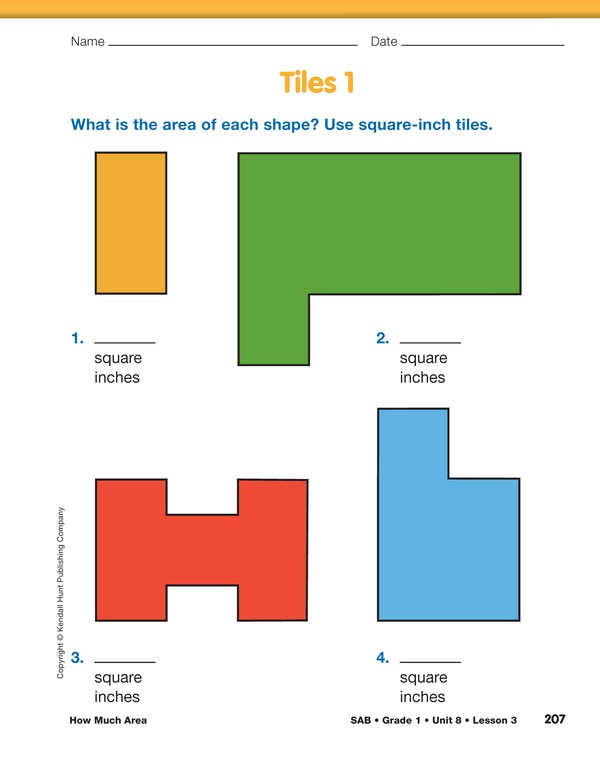How Much Area
Est. Class Sessions: 1Developing the Lesson
Find the Area with Tiles. Direct students to look at the figures on the Tiles 1 pages in the Student Activity Book.
Ask:
Remind students that the area of a shape is the amount of space needed to cover something. The size is often measured by counting the unit squares that can be placed on top of the shape to cover it.
Have student pairs use the square-inch tiles to cover the shapes on the Tiles 1 pages and record the area.
As you observe students working, use prompts similar to the following:
Responses will vary based on the shape, but remind students to report the measurements using a number and unit. If students are measuring area, the unit is square inches. If students are measuring length, the unit is inches.
Ask:
After students complete the Tiles 1 pages, have them share observations and strategies. Use the Sample Dialog to guide this discussion.















